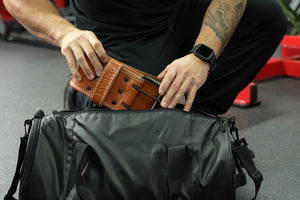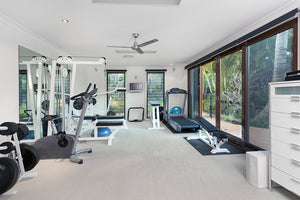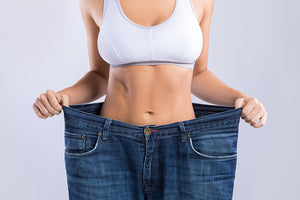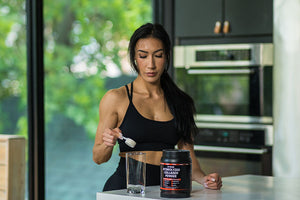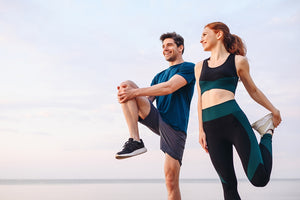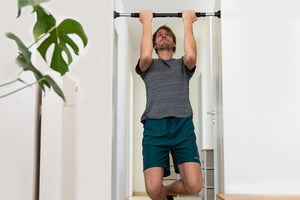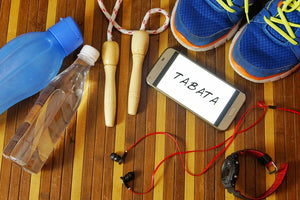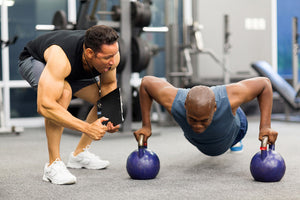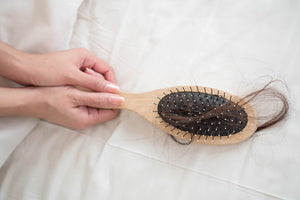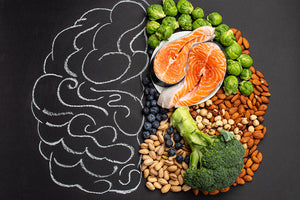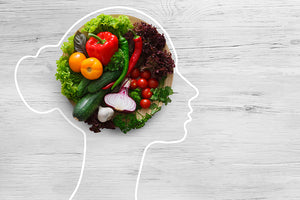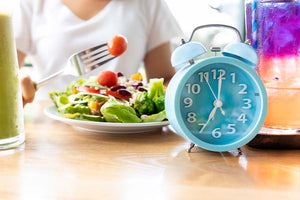Experiencing at least a little bit of anxiety daily is completely normal. It's an inevitable consequence of living in such a hectic world.
Not all anxious feelings are negative. It not only alerts you to potential threats but also inspires you to keep yourself organized and ready for anything, and it assists in determining the likelihood of adverse outcomes.
Nevertheless, when anxiety becomes a daily occurrence, it is time to take action before it spirals out of control. Untreated anxiety can significantly negatively impact your quality of life, and I am saying that from experience.
I “man up” to my anxiety for years until I finally decided to get help and make lifestyle changes to make my life easier and give myself one less thing to worry about. If you feel what I was feeling a few years ago, you’re not in this alone, and stay strong.
Take charge of your life by implementing these effective ways to ease anxiety without medication; that worked for me when I was suffering from an Anxiety disorder.
What Exactly is Anxiety?
In today’s world, anxiety is treated as a curse or something the human body shouldn’t feel at all, which is entirely false.
Anxiety is your body's natural reaction to being under a lot of pressure. Researchers believe it is primarily caused by genetics, environmental factors, and the brain's chemical makeup. It manifests itself as a feeling of fear or worry.
The following are some of the more common symptoms of anxiety:
- Rapid Increase in heartbeat
- Increased rate of breathing
- Restlessness
- Trouble concentrating
However, it is essential to remember that anxiety can manifest differently for different people. While one individual may feel like they have butterflies in their stomach, another may experience panic attacks, nightmares, or painful thoughts.
Having said that, there is a distinction between the everyday anxiety people experience and anxiety disorders. It's normal to feel anxious when confronted with something novel or challenging.
It could be a sign of an anxiety disorder if those feelings become out of control or excessive to the point where they interfere with daily life.
Some examples of anxiety disorders are:
- Panic Disorder
- Post-Traumatic Stress Disorder (PTSD)
- Obsessive-Compulsive Disorder (OCD)
- Separation Anxiety
- Illness-related anxiety
- Phobia
- Social Anxiety
How Can I Get Rid of Anxiety?
Several approaches are available to equip patients with the skills to deal effectively with anxiety attacks. In addition, some medications, such as antidepressants and sedatives, can help maintain healthy brain chemistry and stop anxiety attacks before they start. They might even be able to prevent the most severe symptoms.
But suppose you’re like me, and don’t want to depend on medicines to treat anxiety, and are interested in taking a more natural approach. In that case, there are a variety of things, both big and small, that you can do to help combat anxiety.
You can make changes to habits such as your diet, how much you exercise, and how much sleep you get. You could also give something completely different, like aromatherapy or meditation, a shot.
Regardless of their lifestyle demands, everyone has access to at least one natural method that can help reduce anxiety.
Following are some of the ways I deal with anxiety:
1. Therapy
Asking for help when you're suffering psychologically can be the hardest move to make, but it’s the best thing you can do for yourself; believe me, I have been there.
Psychologists are trained in diagnosing anxiety disorders and have taught me healthier and more effective ways to cope with my symptoms.
Cognitive-behavioral therapy (also known as CBT) is a type of psychotherapy that has proven effective in treating anxiety disorders.
You can learn to identify and manage the factors that contribute to your anxiety with the help of a psychologist and cognitive behavioral therapy (CBT). You will be able to understand how the thoughts you have contributed to the anxiety symptoms you experience through the cognitive component of therapy.
Learning to change thought patterns like these can reduce the likelihood of experiencing anxiety as well as the intensity of its symptoms.
Specifically, you are encouraged to engage in anxiety-inducing activities and situations (like public speaking or being in an enclosed space) to learn that the outcomes you fear (like blacking out or having a panic attack) are quite remote.
The most effective treatment for my anxiety symptoms was psychotherapy. I found that simply having someone to talk to about my issues made a world of difference in my ability to make positive adjustments in my life.
Related Article: How to Overcome Depression?
TRENDING ARTICLES
2. Socializing Regularly
Because of our social nature, it makes sense that spending time with friends and family and maintaining meaningful relationships can help reduce stress.
Socialization includes joining a club or group, chatting online, calling a friend on the phone, or spending time with family. These things make you feel less lonely and more safe, secure like you belong and are having fun.
According to research, the balance of our hormones seems to be affected by social support. When you have enough social support, your body makes more of a hormone called oxytocin, which lowers your anxiety and makes your parasympathetic nervous system work harder to calm you down.
Oxytocin also makes us want to spend time with other people and makes us feel closer to those who are important to us. People who are stressed and have enough social support get a boost of oxytocin, which makes them feel less anxious, improve their ability to deal with things, and are more drawn to other people (thus perpetuating the positive cycle of social support).
Here are some strategies I used to increase socialization:
- Start talking to your friends and family. You could call them, invite them over, have a party, work out together, go out to eat, etc.
- Talk to your neighbors and other people you see often and introduce yourself.
- Join groups you're interested in or take classes (religious, civic, service, hobby, exercise, etc.).
- Make a profile on a dating website or describe yourself anonymously on a free classifieds service like CraigsList (where interested people can email you anonymously).
You should focus on cultivating quality relationships rather than quantity. In other words, having a large group of people you don't know is less likely to help you deal with stress than having 2 or 3 close friends you can talk to.
In light of this idea, it's important to give your relationships some time to grow once you've made them. You must find a good balance between listening to yourself, helping others and helping yourself, and so on.
3. Exercise and Physical Activities

Some research indicates that regular physical activity, such as walking, may help improve mood and not just formal exercise programs.
Although they are often confused, physical activity and exercise are both excellent for your health and serve different purposes.
Any activity that uses your muscles and requires energy to complete is considered a form of physical activity. Examples of physical activity include working, doing housework, and participating in recreational activities.
Physical fitness can be improved or maintained through exercise, which consists of deliberate, systematic, and repeated movements.
When you hear the word "exercise," you might picture yourself jogging inside a gym.
On the other hand, physical activity encompasses a diverse array of activities that aim to increase your activity level to make you feel better.
Activities such as running, lifting weights, playing football, and engaging in other sports and games that increase your heart rate can undoubtedly be beneficial. But so can less strenuous forms of physical activity, such as gardening, washing your car, walking around the neighborhood, or engaging in other activities of a similar nature.
Your mood can benefit from getting up off the couch and participating in any type of physical activity that gets you moving. You don't have to complete all your workouts or other forms of physical activity in a single session.
Adjust your perspective on what constitutes exercise and look for opportunities to sneak in brief bouts of movement at various points in the day.
As an illustration, you should use the stairs rather than the elevator. If you want to get some exercise during your lunch break, park further away from the office. Another option is to think about riding a bike to work if you live close to your workplace.
Maybe try getting yourself a pair of dumbbells and place them near your TV or Computer so whenever you see them, get up and use them for a quick exercise.
I personally bought myself a yoga mat and used it for meditation whenever I felt stressed or anxious. I highly recommend yoga as it has significantly helped me control my emotions.
I also prefer going outside whenever I encounter a tough situation, as a stroll will help declutter your mind and help you make a beneficial choice.
Related Article: Say Hello to Your New Workout Routine: 32 Exercises You Can Do on a Yoga Mat
4. Give Yourself an Exit Strategy
Anxiety can often be traced back to a sense of helplessness or powerlessness. You can't always be in control of your life, but there are things you can do to recognize the situations that set off your anxiety and develop coping mechanisms for dealing with them.
While running from activities that cause anxiety isn’t the best idea because avoiding your triggers may become a habit, giving yourself a choice to leave whenever things get out of control is not bad.
You might feel anxious about going into a social situation or meeting new people, and the mere thought of it makes you want to throw yourself off a bridge. I sure did.
At a party, when everyone else is having fun and engaging in interesting conversation, you might find yourself leaning against the wall and counting down the minutes until you are finally relieved of your torment because you carpooled with your friends and can’t leave.
This situation can occur, or you might have faced them in the past; while overthinking isn’t a great idea, planning ahead of time is.
What if, before you left the house, you had a plan to get out of this situation? You could, for instance, drive yourself to the party rather than carpool with your friends who are party animals.
If your anxiety rises and you feel like you can't handle another minute of awkward interactions, you will have the option to leave the situation. Your level of anxiety will directly correlate to how much control you feel over a situation.
I recommend only having an exit strategy when you most need it, and try calming yourself in social events by going into the restroom and performing breathing exercises.
The more you get out of anxious environments, the more you will avoid these activities, which will lead to avoiding more activities. As a result, you will end up in your room feeling anxious by just stepping a foot outside of your house, and believe me, you don’t want that.
Instead of planning an exit route for all events, try to plan how you can enjoy these events, which brings me to my next point, try to live in the moment.
5. Live in the Moment
When you only think about the present, it's hard to worry. Most of the time, worry is about the future, but sometimes it's about the past.
Keeping one's presence in the here and now is a challenge that is often easier to undertake in theory than in practice. There are a lot of things in your life that can pull your attention away from the present moment.
You can't change the past or the future, and you can't borrow a time machine, so here's an idea:
Take things as they come. Not to say that you can't be proactive and stop problems from happening. But don't worry so much about what has happened and what will happen that you stress yourself out.
Mindfulness is one of the best ways to train yourself to be in the moment. Mindfulness is paying attention to your feelings, thoughts, and senses in the present moment in a way that is accepting, open, nonjudgmental, and curious. Simply put, mindfulness is being aware of yourself in the present moment.
You can be aware of the present moment at any time or develop a schedule to set aside a certain amount of time each day to practice mindfulness meditation.
Try practicing for a few minutes every day and adding more time as you go. What's the best? You can do it in bed, at your desk at work, or even on the way home.
When I started meditation, it was hard, a lot of haunting thoughts came into my mind making me more anxious, but that’s the purpose of meditation. You talk to yourself about the things you’re potentially scared of, try to calm yourself, and tell yourself that everything will be alright.
It's like being your own coach; nothing can stop you when you get the hang of it.
6. Dietary and Nutritional Habits
While sugary foods like soda, cakes, and ice cream can boost happy hormones, it’s the worst thing you can do to yourself. This habit is considered a form of self-harm and must be avoided.
I know that symptoms of anxiety can make you feel sick. Dealing with anxiety can be hard and often requires changing how you live.
Anxiety can't be cured by changing what you eat, but being careful about what you eat may help.
Here's what to do:
Eat a Breakfast With Some Protein - Eating protein at breakfast can help you feel fuller for longer and keep your blood sugar steady, giving you more energy as you start your day.
Eat Complex Carbohydrates - Carbohydrates may help your brain make more serotonin, which has a calming effect. Eat whole grains, such as oatmeal, quinoa, whole-grain bread, and whole-grain cereals, which are high in complex carbohydrates. Avoid junk foods and drinks high in sugar.
Drink a Lot of Water - Even a little dehydration can make you feel bad and cause hormone imbalances in the body. Keep yourself hydrated by drinking 7 to 8 glasses of water a day.
Limit or Avoid Alcohol - The first thing that alcohol may do is calm you down. But when your body breaks down alcohol, it can make you tense. According to the National Institute of Alcohol Abuse and Alcoholism, Alcohol can make it hard to fall asleep and increase depression and substance abuse risks.
Limit or Avoid Caffeine - Don't drink anything with caffeine. They can make you feel jittery and anxious and keep you from sleeping.
Pay Attention to Food Sensitivities - Some people can have bad physical reactions to certain foods or additives. Their moods can change because of these physical reactions, making them angry or anxious.
Try to Eat Healthy, Well-Balanced Meals - Eating well is important for your body and mind. Ensure a proper intake of fruits and veggies. Salmon, which is high in omega-3 fatty acids, may also help if you eat it often.
Changing what you eat might help your overall mood or sense of well-being, but it's not a replacement for treatment.
FAQ
Are There Coping Factors To Help Deal Effectively With Stress?
Following are some of the most effective coping factors that will help you deal with stress in your daily life and what I learned after years of counseling:
- Keeping a positive but realistic view of things
- Facing fear
- Using one's own moral compass as a guide
- Using spiritual or religious practices
- Looking for and accepting help from others
- Trying to be like strong role models
- Keeping your body in shape
- Keeping your mind sharp
- Searching for meaning amidst challenges
You will feel much better if you incorporate these activities into your daily life.
What are the symptoms of stress in adults?
Some of the most common symptoms of stress in adults are:
- Memory Problems, inability to focus, bad judgment, anxious or racing thoughts, and constant worry are all symptoms of stress.
- Emotional Symptoms include moodiness, irritability or short temper, agitation, inability to relax, feeling overwhelmed, and feeling lonely and isolated.
- Aches and Pains, diarrhea or constipation, nausea, dizziness, chest pain, and a fast heartbeat are all physical symptoms.
- Behavioral Signs include eating too much or too little, sleeping too much or too little, isolating yourself from others, putting off or ignoring responsibilities, using alcohol, cigarettes, or drugs to relax, or doing things that make you feel anxious (e.g., nail biting, pacing)
What are the symptoms of stress in teens and children?
Young people, especially children, may find it hard to notice and express themselves when stressed. Among children, stress can show up as changes in the way they act.
Common changes include irritability, pulling away from things that used to be fun, showing worry all the time, complaining too much about school, crying a lot, showing sudden signs of fear, separation anxiety, sleeping too much or too little, or eating too much or too little.
Spending more time with and confiding in peers is a normal part of growing up for teens. However, avoiding parents a lot, ditching old friends for a new group, or being too mean to family members could be signs that the teen is under a lot of stress.
How are anxiety disorders diagnosed?
Primary care doctors and psychiatrists say that someone has an anxiety disorder if they have symptoms that happen most of the time for six months and make it hard for them to function at home, work, or school.
Doctors do physical and mental exams to rule out other causes of anxiety symptoms. Anxiety disorder-like symptoms can be caused by heart disease, thyroid problems, menopause, substance abuse, and/or side effects of drugs like steroids.
Take Away
Anxiety can make daily tasks hard and bothersome, but with a few tactics, you can deal with this natural body response and regain control of your life. I highly recommend going to therapy and trying it out at least once; it can be intermeddling at first, but it is worth it. Also, spending time with yourself and others is also a great way to deal with anxiety symptoms. Try out meditation and eating healthy as it worked like a charm for my anxiety. Last but not least, making simple daily changes as discussed in this article, can help you overcome your symptoms.
Reading List
Article Sources
- Gross, C., & Hen, R. (2004). Genetic and environmental factors interact to influence anxiety. Neurotoxicity research, 6(6), 493–501. https://doi.org/10.1007/BF03033286
- Martino, J., Pegg, J., & Frates, E. P. (2015). The Connection Prescription: Using the Power of Social Interactions and the Deep Desire for Connectedness to Empower Health and Wellness. American journal of lifestyle medicine, 11(6), 466–475. https://doi.org/10.1177/1559827615608788
- Jones, C., Barrera, I., Brothers, S., Ring, R., & Wahlestedt, C. (2017). Oxytocin and social functioning. Dialogues in clinical neuroscience, 19(2), 193–201. https://doi.org/10.31887/DCNS.2017.19.2/cjones
- Carmeli, Eli, et al. “Physical Exercises Can Reduce Anxiety and Improve Quality of Life among Adults with Intellectual Disability : Original Research Article.” International SportMed Journal, vol. 10, no. 2, Jan. 2009, pp. 77–85. journals.co.za (Atypon), https://doi.org/10.10520/EJC48373.
- NIAAA Publications. https://pubs.niaaa.nih.gov/publications/aa76/aa76.htm. Accessed 3 Oct. 2022.
- Gwin, JA, and HJ Leidy. “0811 a PILOT STUDY ASSESSING WHETHER THE CONSUMPTION OF a PROTEIN-RICH BREAKFAST IMPROVES APPETITE CONTROL, EATING BEHAVIOR, AND SLEEP QUALITY COMPARED TO SKIPPING BREAKFAST IN HEALTHY YOUNG PROFESSIONALS.” Sleep, vol. 40, no. suppl_1, Oxford UP (OUP), Apr. 2017, pp. A300–A300. Crossref, https://doi.org/10.1093/sleepj/zsx050.810.
- Wurtman, R. J., & Wurtman, J. J. (1988). Do carbohydrates affect food intake via neurotransmitter activity?. Appetite, 11 Suppl 1, 42–47.



